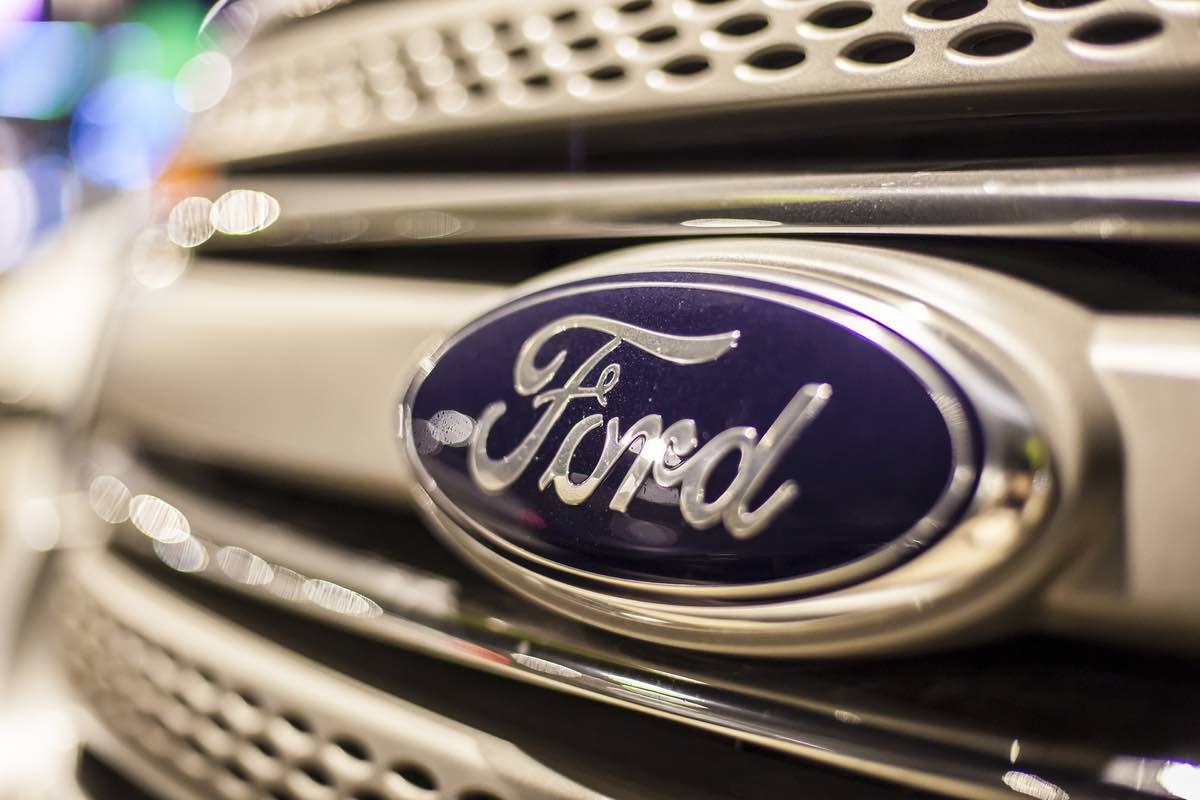The Ford F-150 has been a popular choice for many years, and it’s no surprise why. The iconic design, the engine options, and the fact that it’s great for nearly anything you put it to make this vehicle very versatile. But like all vehicles, it’s inevitable for issues to arise.
Issues that cause your Ford F-150 to make a clicking noise are a weak or drained battery, poor battery connections, and a faulty starter motor or alternator. Solutions include checking the battery connections and voltage using a multimeter. In other cases, installing replacements is recommended.
It can be jarring when your Ford F-150 starts making a clicking noise, and it’s usually not something you’d expect from a vehicle on the road today. In this article, you’ll find common causes and solutions related to this occurrence.

1. Weak Battery or Poor Connections
If you hear a clicking noise from the engine of your Ford F-150, it can be a sign of issues with your battery or the connections to it.
Your Ford F-150 has a lot of electrical components that require power. The battery, located in the engine compartment, is your vehicle’s primary power source.
The battery provides a constant and uninterrupted supply of electricity to the starter, headlights, and other electrical accessories. If your engine starts but does not continue running, it may be because the battery is dead.
If the clicking happens only when you’re starting the truck, it likely means that the starter motor is attempting to turn the engine but isn’t getting enough power from the battery. This is one of the most common causes of this issue, among others.
This can be because of many factors, like corroded battery terminals or damaged wiring from the battery to the starter. In the worst-case scenario, your battery is dead and needs to be replaced.
How To Fix
If you are having problems starting your Ford F-150, the first step is to direct your attention to the connection of the battery cables.
Check that all connections are tight and secure. There should be no loose or frayed cables, corroded terminals, or corrosion on the terminals or clamps.
If you feel confident all connections are secure and there is no loose or frayed cable or corroded terminal, you should test your battery’s voltage with a multimeter.
If you need a multimeter, try KAIWEETS Digital Multimeter from Amazon. This double-insulated unit is equipt with a double ceramic fuse and thermistor protection and multifunctional features such as a flashlight and Min/Max/Average recordings.
To test the vehicle’s battery, you should:
- To discharge any possible surface charge the battery may hold, turn on the headlights for a few minutes.
- The multimeter will evaluate DC voltage, denoted by the letter V above a solid and a dashed line.
- Fix the dial to gauge between 0 and 20 volts accurately.
- Switch off the vehicle’s lights.
- Connect the black needle pointer of the multimeter to the battery’s negative terminal and the red needle to the positive battery terminal
- If the multimeter reflects an average battery voltage of 12.2 or lower, it’s time to replace your battery.
Please note that before replacing any parts, try charging up the battery with a booster pack to see if that fixes the issue.
2. Faulty Starter Motor
The Ford F-150 has a complicated electrical system. In addition to the wiring, the many sensors, and switches, other components help the engine start. One of these is the starter motor. If you’re hearing a clicking sound as you try to start your vehicle, it could mean your starter’s going bad.
A starter motor is a vital part of any car engine. As the name implies, its job is to spin up the engine when starting your car. When the ignition key is turned, the starter is activated and spins the flywheel to start turning the engine’s crankshaft. The crankshaft drives the pistons, which create the energy that powers your truck.
It’s driven directly off your battery through connections using battery cables. Sometimes these connections become subject to wear and tear, causing the infamous clicking sound coming from your vehicle.
Alternatively, if the connections are not the issue, the starter motor may have packed up.
How To Fix
The starter motor in an F-150 is located inside the lower engine block, usually underneath the passenger side. This positioning ensures it is challenging to access – making it difficult for any DIY enthusiast to tackle this problem independently.
But if you have enough know-how, here’s what to do:
- Follow the red cable that runs from the battery to locate the starter motor.
- Begin checking the connections for faults and corrosion, and replace connections if needed.
- If everything is in working order, you know you have a problem with the motor, which will need replacing.
Here is an informative YouTube video to help you step-by-step through the process of replacing your F-150 starter motor:
However, due to the motor being challenging to access and being surrounded by many moving parts, it’s recommended that you get a certified mechanic to do the replacement. They will have the knowledge and correct tools to efficiently access and replace the motor.
3. Faulty Alternator
As with any vehicle, the Ford F-150 is equipped with an alternator. Alternators are in charge of generating the electricity that powers your vehicle’s battery, headlights, and other electrical components, so it needs to function correctly.
The alternator is designed to regulate the charge of the battery and send electricity to the other parts of your car that need it. If the alternator is not working how it’s supposed to, it won’t be able to recharge the vehicle’s battery.
A faulty alternator cannot effectively charge your F-150’s battery. Therefore, if you’re hearing a clicking noise from underneath your hood, this could be an indication that your alternator is going out.
How To Fix
A faulty alternator can be a pain. It’s almost always a more expensive repair than you’d like. Not to mention, if your battery is dead, it’s not like you can easily cruise down to the parts store for a replacement unit.
If you only have a basic understanding of how your car works, you can have a mechanic replace the alternator. But these replacements are expensive, and you’ll likely have to pay hefty labor and replacement cost.
The good news is that fixing a faulty alternator on a car is straightforward and can be accomplished by you if you’re a DIY enthusiast, saving you money.
To replace the alternator, you’ll have to buy the best alternator for your F-150 model and follow the step-by-step process in this YouTube video:
In general, you should check that your alternator is in good condition once a year to ensure everything is in working order.
Have you ever been shocked by hearing the diesel engine sound from your Ford F-150? Why does this happen, and what can you do about it? Read my guide to learn more. [Why Does Your Ford F-150 Sound Like a Diesel?]

Conclusion
The Ford F-150 is a fantastic truck, but even these rugged and reliable trucks can develop issues. The most common problem people report is a clicking noise. While this is not a significant concern initially, it usually means some underlying problems in your F-150.
The three most common issues concerning clicking noise all deal with power supply – a weak battery (and/or battery connections) and a faulty starter motor or alternator.
Ultimately, these are simple fixes and can be tackled by any certified mechanic.
